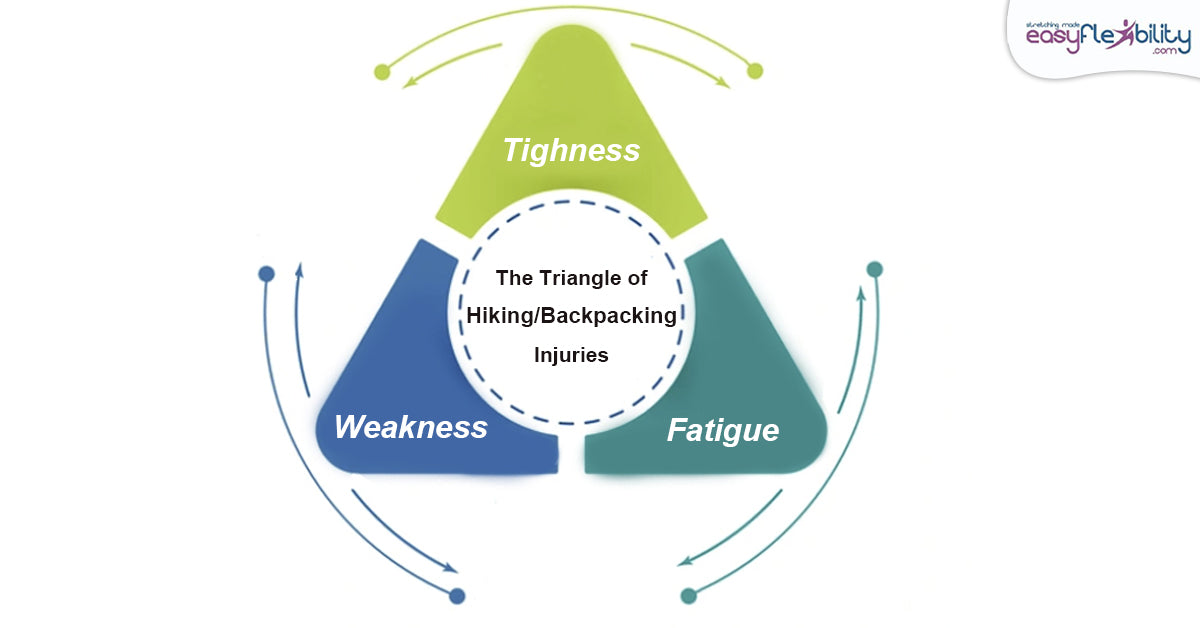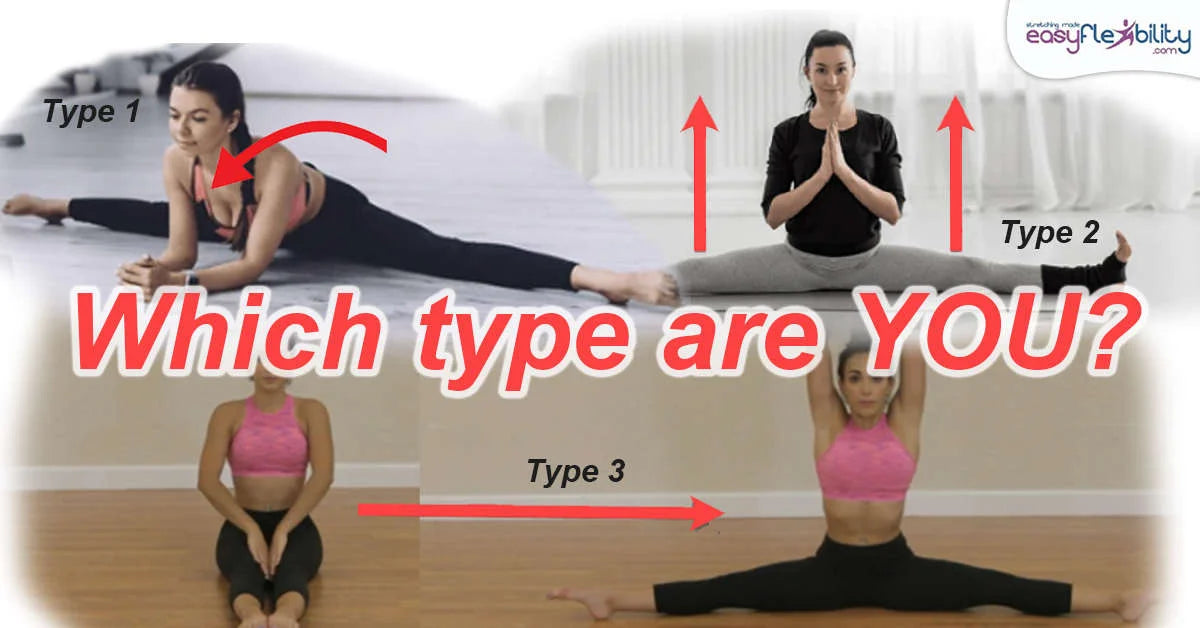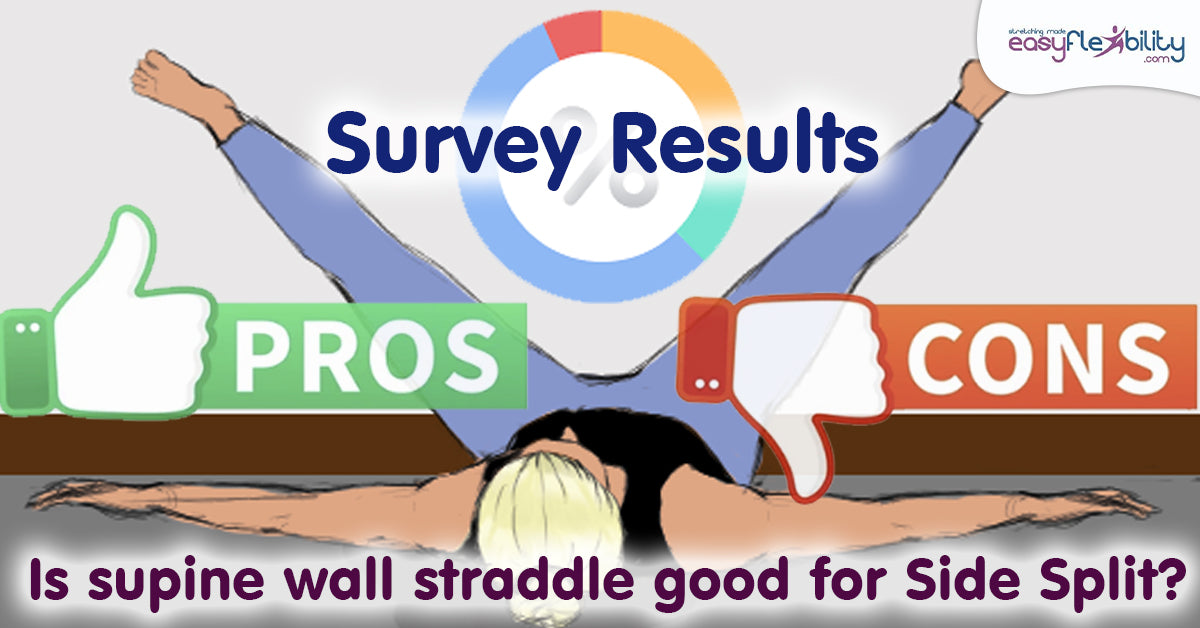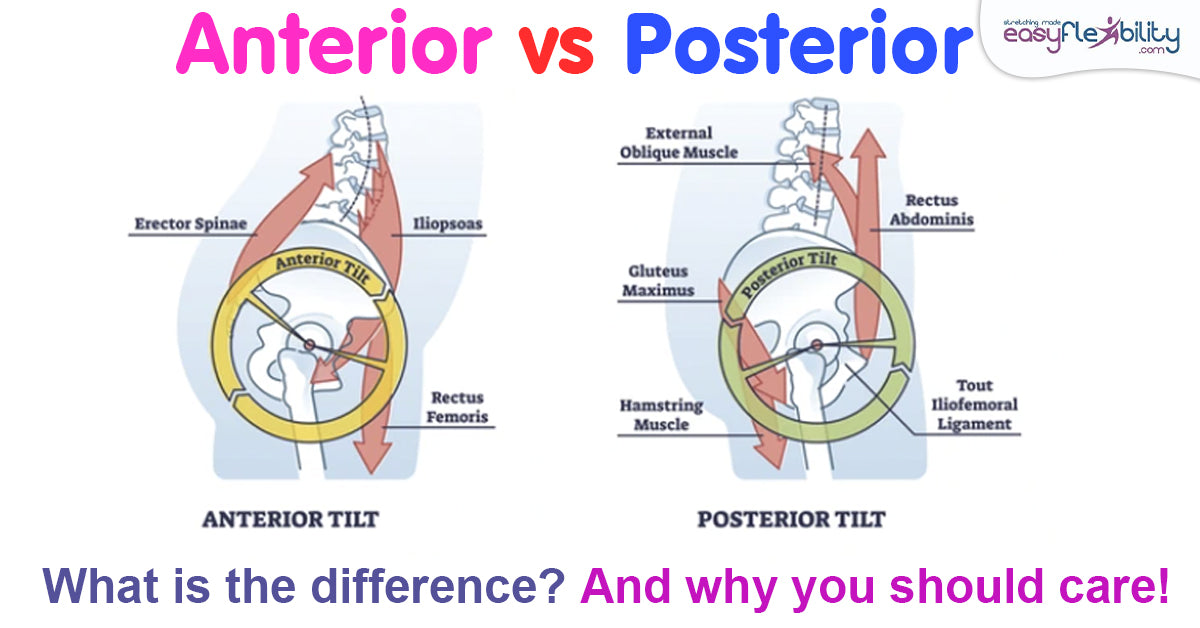True Front Split: Stop Cheating Yourself
Posted by Paul Zaichik on

You think you’re doing a split but you’re not! Stop cheating yourself! 10 issues that are preventing you from doing a True Front Split, reasons and solutions.
If you have been faking a split, you're only cheating yourself. Here's how to see if your True Front Split is fake or real.
I decided to write this article because over the years and few times recently people would send me a picture of their split. And when I tell them that they are not really doing a True Front Split, they get a little bit upset. It is somewhat of an unpleasant news when you think you have achieved a skill and someone in authority tells you that you have not.
This article will address how to spot and incorrect split. The various ways of seeing an incorrect split. Perhaps cheating is not the best term, simply because, not everyone is trying to cheat some people honestly believe that they have mastered a True Front Split. But True Front Split is a specific skill. Just because someone has their leg up doesn’t mean that they are doing a Kick. A Roundhouse Kick is not a Side Kick. A Back Attitude is not an Arabesque. Something that looks similar to something else is not exactly it.
I'm talking about some purely from extended position point of view and not from an actual skill. Because of course from the skill point of view you would see that a Roundhouse is not a Side Kick but sometimes people do something that's in between. And the same applies to a True Front Split where there is a way to a little twist here, a little tweak there, a little bend here, a little rotation there. So, it’s best to know and it's very simple. Here I’m going to address all the possible adjustments to lack of flexibility in specific muscle, or group of muscles, I have seen over the years.
True Front Split Strength & Flexibility Training at Home
COMPLETE COMBO - ALL 3 LEVELS - BEGINNER, INTERMEDIATE, ADVANCED
It's easy to get started!
If you are ready to do effortless Splits ANYTIME that you wish with a training method that is Easy, Pain Free and Fast, that is designed to work naturally with your body and keep your flexibility for years to come, then join thousands of satisfied EasyFlexibility practitioners and START YOUR TRAINING TODAY!
This Course includes the following step by step instructions for:
This Course includes the following step by step instructions for:
- Beginner Split
- Intermediate Split
- Advanced Split (Beyond 180 degrees)
First, I need to describe what a target skill is before I talk about what it is not. Since there are people who will do this skill differently than I described, and then it's not a mistake, it is just how the body is positioned for a specific style, or need, or requirement.
A description of a True Front Split is very simple. The hips are squared forward. One hip is not behind the other. They are at the same level. both legs the front and the back legs are straight. the kneecap of the front leg is pointing up. and the kneecap of the back leg is pointing down. ideally the back of the front leg and the front of the back leg are touching the floor.
Issue #1 – The Front Leg is Turned Out.
If you perform the split in your style, in your school, with a turn out then it's not a mistake for you. But according to a standardized description I gave earlier it is a mistake. There are people who can do a True Front Split on the floor, but they can only do it with the leg turned out. So, the kneecap is going to point to the side and not up to the ceiling. Assuming the whole structure is fine except for the front leg, then most likely the problem is in the Lateral Hamstring, the Long Head of the Biceps Femoris of the front leg. Yeah of course there are other muscles that rotate the hip out but usually they're not the issue as much as the Long Head of the Lateral Hamstring. Now this is assuming that the whole structure is correct. If the whole structure is not correct, the hips are not even, and the back leg is turned out, or something else, we may have an issue coming from somewhere else and not the front leg although it is the front leg that is turned out.
Issue #2 – The Back Leg is Turned Out.
The kneecap is not facing down it's facing out to the side. If this is how you perform your splits for your specific needs, it's fine but it's not a hip squared True Front Split it’s something else. If indeed you are trying to do a split as described above but you can only do it with your rear leg turned out, then of course the issue is in the muscles of the back leg that turn the hip out. It means that they are not flexible enough to allow the hip to turn in. Most often the issue is in the Tensor Fasciae Lata and in the Sartorius of the back leg. Both issues are easily fixed with isolating those muscles with Zaichik Stretching Techniques (ZST’s).
Just like with the front leg if the structure is off then the problem may not be in the back leg in those muscles it might be somewhere else we're talking about everything is as described above except just for that back leg. Please keep in mind that we are talking about just the muscles here. We are not talking about the ligaments. We're not talking about the scar tissue in the ligaments or anything else in the ligaments, just talking about the muscles.
Issue # 3 – Tight Hip Flexors and Adductors.
A cheating technique that looks good in the picture but it's not a real split. Everything is good the hips are squared front leg turned in, back leg turned in, everything is good and yet the person is leaning forward and placing their body onto the front leg, so it looks like someone did a split and then just leaned forward if you look at just the end point of that on a picture.
But in actuality, this person might be cheating for the picture and I have seen quite a lot of people who do this this. They have very flexible front leg, very flexible extensors of the hip, hamstrings and other muscles that extend the hip, and yet they have very tight hip flexors and adductors, on the back leg. So they can't do a split with their body being vertical so they lean forward and it looks like they just did that but they didn't just do that they did it because they cannot be vertical because there is issue with the back leg flexibility.
On the side note there are a lot more people that have flexible hamstrings than flexible hip flexors and in some cases adductors. so when I meet people like that I recommend our hip flexors program big beginner or advanced depending on what they need because they already have good flexibility in their front leg and they need to focus on their back legs specifically to get a True Front Split.
True Front Split Strength & Flexibility Training at Home
COMPLETE COMBO - ALL 3 LEVELS - BEGINNER, INTERMEDIATE, ADVANCED
It's easy to get started!
If you are ready to do effortless Splits ANYTIME that you wish with a training method that is Easy, Pain Free and Fast, that is designed to work naturally with your body and keep your flexibility for years to come, then join thousands of satisfied EasyFlexibility practitioners and START YOUR TRAINING TODAY!
This Course includes the following step by step instructions for:
This Course includes the following step by step instructions for:
- Beginner Split
- Intermediate Split
- Advanced Split (Beyond 180 degrees)
Issue #4 – The Hips Are Not Squared.
What I see very often is when people have hips that are not squared, they will still try to rotate the spine and turn toward the front leg. So that the shoulders are squared, but the hips will not be squared. What’s interesting is when hips are not squared, most likely the back leg is not going to be turned in. There's going to be kneecap at least partially out to the side, maybe not completely, but at least partially.
The only exceptions I’ve seen to this is in children. children can get away with this a little bit because they can have hips that are not squared and yet have very good internal rotation of the back leg where there is still kneecap facing down and this is just because they have such a good internal rotation of the back leg. For most people if the hips and not squared the front of the back leg will not face down to the floor. The issue here in most cases is the front leg. the hip cannot be squared to the front leg, so you see the back leg doing turn out and the reason is usually the Lateral Hamstring of the front leg. sometimes these people can square the hips. But if they square the hips there’s going to be a problem popping up somewhere else and that's usually there's going to be a turn out of the front leg so if the front leg is the kneecap facing up the hips are not squared. And if the hips are squared the front leg will turn out. When I see that I know that it is a lateral hamstring, and if there is it's a major problem it's pretty easy to fix with the Zaichik Stretching Techniques focusing on the Lateral Hamstring. I could tell you that these techniques actually became quite popular especially with the people that are having this issue.
Issue # 5 – Sciatic Nerve
The other problem that I see and it’s a less common problem, but it does happen, is a problem was a sciatic nerve. We have a ZST that focuses on everything behind the knee but not the muscle. This is a very unique ZST, its actions are of what is not connected by the muscle. It's not a true ZST in a sense of muscle, but it works very well for the people with the nerve or fascia issue who cannot do a True Front Split due to the problem with the front leg.
Issue # 6 – Front Leg is Bent
Another issue that can come up and it's a lot less common is when the front leg is bent. A person has hips squared, both legs are turned properly, but the front leg is bent. Most often when you see that the front leg is bent you'll also see a person leaning forward a little bit, and placing their hands on the floor.
Often than not although it looks like the front leg is not flexible because the knee is bent at the front leg it’s actually the back leg is not flexible and the person is forced to lean forward away from the inflexible back leg. And a little investigation is usually needed to see which muscles are tight on the back leg or if there is some kind of an issue with the hip joint that is not allowing a person to stay vertical.
True Front Split Strength & Flexibility Training at Home
COMPLETE COMBO - ALL 3 LEVELS - BEGINNER, INTERMEDIATE, ADVANCED
It's easy to get started!
If you are ready to do effortless Splits ANYTIME that you wish with a training method that is Easy, Pain Free and Fast, that is designed to work naturally with your body and keep your flexibility for years to come, then join thousands of satisfied EasyFlexibility practitioners and START YOUR TRAINING TODAY!
This Course includes the following step by step instructions for:
This Course includes the following step by step instructions for:
- Beginner Split
- Intermediate Split
- Advanced Split (Beyond 180 degrees)
Issue # 7 – Lack of Flexibility in the Muscles of the Back Leg
The next issue is when a person who is performing the True Front Split is cheating with the back and hamstring flexibility. It’s rather common and happens a lot. If you are not looking for it you will miss it. It is very similar to the person who is leaning forward into the front leg, except now, instead of leaning forward, they come up. But they don't come up by extending the back hip, they come up by hyperextending the spine. So the flexibility of their hamstrings is good, flexibility of their spine is good, but the flexibility of the muscles of their back leg is poor.
And the reason why this is so common is because a lot of people do the split by pushing into their hamstrings. Getting into a false split where the legs are 180 degrees apart, but the body is forward. so they know they have to get the body up to vertical and they begin to push the body up. For most people it's a lot easier to hyperextend the spine then to extend the hip so the spine begins to get more flexible, and nothing happens at the hip. remember that there's so many tight muscles in the hip and it's very difficult to just stretch them altogether if you isolate them again with Zaichik Stretching Techniques it's so much faster and simpler to stretch them and actually get flexibility in the hip and not fake it by extending the back.
Issue #8 – Front leg is not in front
So next issue, yes there are that many. When you watch people do splits for so many years, you spot many different little adjustments and mechanisms.
The next one looks like this the hip squared the back leg is turned in properly,
the front leg is turned in properly, but the font leg is not in front, the front leg is a little bit to the side. Standing behind the person and you looking at them the front leg is not hidden by the body when you’re staying behind them, it's actually out to the side so you could see the front leg while watching a person from the back. And the issue again here usually is the lateral hamstring. I see people do that quite often. When a picture is taken from a side you cannot see it too well unless you know what to look for. But if you look at the person directly from the back or from the front you will see it. Again Lateral Hamstring is the problem here. Providing that the whole structure is correct if not the problem could be somewhere else and the focus should be on the Lateral Hamstring. But if there is a hyperextension of the spine and the problem is in the back hip then It's not just the lateral hamstring where the issue is.
the front leg is turned in properly, but the font leg is not in front, the front leg is a little bit to the side. Standing behind the person and you looking at them the front leg is not hidden by the body when you’re staying behind them, it's actually out to the side so you could see the front leg while watching a person from the back. And the issue again here usually is the lateral hamstring. I see people do that quite often. When a picture is taken from a side you cannot see it too well unless you know what to look for. But if you look at the person directly from the back or from the front you will see it. Again Lateral Hamstring is the problem here. Providing that the whole structure is correct if not the problem could be somewhere else and the focus should be on the Lateral Hamstring. But if there is a hyperextension of the spine and the problem is in the back hip then It's not just the lateral hamstring where the issue is.
True Front Split Strength & Flexibility Training at Home
COMPLETE COMBO - ALL 3 LEVELS - BEGINNER, INTERMEDIATE, ADVANCED
It's easy to get started!
If you are ready to do effortless Splits ANYTIME that you wish with a training method that is Easy, Pain Free and Fast, that is designed to work naturally with your body and keep your flexibility for years to come, then join thousands of satisfied EasyFlexibility practitioners and START YOUR TRAINING TODAY!
This Course includes the following step by step instructions for:
This Course includes the following step by step instructions for:
- Beginner Split
- Intermediate Split
- Advanced Split (Beyond 180 degrees)
Issue #9 – Torso is leaning to the side
And finally sometimes people do this little cheating mechanism where it looks like they're in a split but from the side it's hard to see. You could see it from the front that the body is not vertical. The torso is leaning one side. And this is usually to take the pressure off the opposite leg so if the right leg is in front and the person is leaning to the left to take the pressure off the front right leg. Person is leaning to the right it is to take the pressure off the back left leg. And it's also another cheating mechanism.
#10 - Toes are pointed.
I was debating to talk about this point because the True Front Split is done different but this is about the pointing of the front foot or not. In other words, pushing the front toes, the toes of the front leg away from you or not. A lot of people perform the True Front Split with the toes pointed. I perform it with the toes pulled back. It's easier to point the toes for most people than pull them back. If you point the toes because this is how you do it for your purpose, then it’s fine. But if you are trying to do a split with the toes pulled up and you are only pointing them because you cannot pull them up due to the lack of flexibility of the front leg then it’s also sort of a cheating mechanism.
Remember we're all different and due to how the body is structured and what kind of occupation someone has or injury. Even infections, yes infections in the muscles and nerves and joints, there may be chronic infections. All of these factors can get a person to try to cheat a little bit one way or the other to kind of play up their strengths and play down the weakness to do a split but it may not be a a complete split as is described above.
If you are interested in using Zaichik Stretching Techniques to master your splits please click here
True Front Split Strength & Flexibility Training at Home
COMPLETE COMBO - ALL 3 LEVELS - BEGINNER, INTERMEDIATE, ADVANCED
It's easy to get started!
If you are ready to do effortless Splits ANYTIME that you wish with a training method that is Easy, Pain Free and Fast, that is designed to work naturally with your body and keep your flexibility for years to come, then join thousands of satisfied EasyFlexibility practitioners and START YOUR TRAINING TODAY!
This Course includes the following step by step instructions for:
This Course includes the following step by step instructions for:
- Beginner Split
- Intermediate Split
- Advanced Split (Beyond 180 degrees)
© Ideas presented here are original to the Author and may not be plagiarized, copied, etc., without the written permission by the author. ElasticSteel Corp., EasyFlexibility, Paul Zaichik, et. El., 2022. No part of the materials available through ElasticSteel.com, EasyFlexiiblity.com, site may be copied, photocopied, reproduced, translated or reduced to any electronic medium or machine-readable form, in whole or in part, without prior written consent of Paul Zaichik EasyFlexibility.com, Elasticsteel.com.. Any other reproduction in any form without the permission of Paul Zaichik EasyFlexibility.com, Elasticsteel.com is prohibited. All materials contained on this site are protected by United States copyright law and may not be reproduced, distributed, transmitted, displayed, published or broadcast without the prior written permission of Paul Zaichik, EasyFlexibility.com, Elasticsteel.com.
Share this post
- 0 comment
- Tags: best stretches for splits, can anyone do the splits, easyflexibility, flexibility, Front Split, front splits, full split, how long does it take to do the splits, how long does it take to learn the splits, how to do a split, how to do split, how to do the middle splits, how to get your splits, how to learn the splits, how to stretch for splits, kinesiological stretch, kinesiological stretching, middle split stretch, Training Flexibility
0 comment








